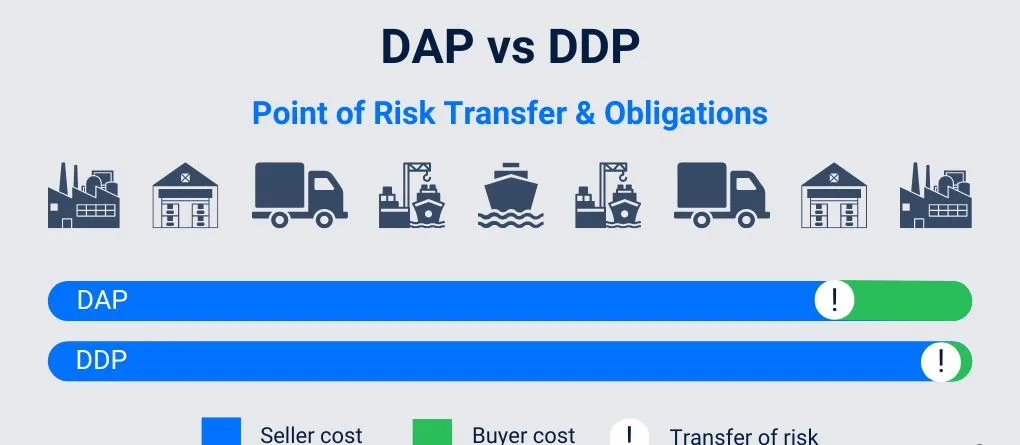What Is Drayage?
Drayage is defined as the short-distance transportation of goods within a radius of 15-50 miles; in container shipping, drayage predominantly entails the movement of goods from a port to a truck, rail, or proximate warehouse. This critical link in the supply chain facilitates multimodal transport by ensuring the seamless cargo transition between different modes of transportation, typically within the same geographical area and completed within 1-2 hours.
Why is drayage important?
Drayage is essential for the smooth functioning of supply chains for several reasons:
- Critical Link in Intermodal Transport: It connects various transport modes, ensuring goods move seamlessly from ships to rail or road.
- Time-Sensitive Deliveries: Drayage enables the quick transfer of goods to meet deadlines or customer demands.
- Port Efficiency: It prevents congestion at ports by swiftly removing containers for storage or delivery.
- Enhanced Flexibility: Drayage allows handling varying shipment sizes and destinations.
What is container drayage?
Container drayage is a short-distance trucking service centered at ports, usually operating within a 15 to 50 mile radius. It connects different modes of intermodal transport, such as sea or air. It is responsible for moving goods from one location to a destination, such as a container ship, warehouse, order fulfilment centre, or rail yard before or after a long-distance transport.
Different Types of Drayage Services
Drayage services are a specialized short-distance transportation solution that plays a vital role in the logistics and supply chain industries. The following are the main types of drayage services:
Pier Drayage
Freight trucks move cargo from a rail hub to a pier or dock. There, it is loaded onto a ship for transport. This service makes the transition of goods from rail to sea seamless.
Intra-Carrier Drayage
This service involves the short-distance transport of goods within facilities owned by the same carrier. For example, it may transfer cargo from a rail hub to another intermodal hub or a container freight station for loading onto a plane.
Inter-Carrier Drayage
Inter-carrier drayage refers to moving cargo between facilities operated by different carriers. It includes transitions such as rail-to-sea, sea-to-rail, or rail-to-rail. For instance, goods unloaded from ships are transported by drayage trucks to their scheduled railroad transport, or vice versa.
Shuttle Drayage
Shuttle drayage is used for temporary storage when docks or shipping hubs are over capacity. Excess containers are transported to a parking or storage lot until space becomes available or the next ship is ready for departure.
Expedited Drayage
This type of drayage prioritizes time-sensitive freight, ensuring goods are delivered quickly to their destination. It is often used for urgent shipments requiring faster handling compared to standard services.
Door-to-Door Drayage
Door-to-door drayage delivers goods directly from the port to the customer’s doorstep. It is commonly utilized in e-commerce and retail, where direct delivery is a key part of the service offering.
What is a port drayage?
Port drayage involves transporting goods to or from the port, usually to a nearby warehouse, rail terminal or distribution centre. It ensures that imported or exported goods are efficiently transferred to their next stop. Port drayage is particularly important in areas with high port activity.
How is drayage cost calculated?
The cost of drayage depends on several factors, including:
- Distance: Shorter distances are generally less expensive, while longer routes within the drayage range can be more expensive.
- Weight and volume: Heavier or oversized goods require additional resources, which results in higher costs.
- Type of drayage: Specialized services such as expedited or door-to-door are generally more expensive.
- Time: Delays at ports or terminals can increase costs due to additional waiting time or storage fees.
- Fuel costs: Fuel prices directly affect the cost of trucking services.
Drayage fees are generally incorporated into the shipping fee, particularly in intermodal transport scenarios. Due to its integral role in container shipping, carriers typically include drayage costs in their quotations. It is advisable to consult with your agent or forwarder for precise pricing information.
You may be interested in the following content:
- What is Expedited Shipping, 2024 Comprehensive Guide
- What is international shipping? An advanced guide
- International Container Transport, 2025 Comprehensive Guide
- What documents do I need for international shipping?
- How can I calculate and optimize shipping costs?
- What is a cfs(container freight station)? International shipping guide




